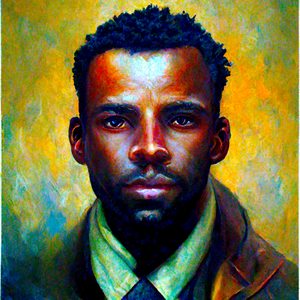Gordon Palmer (Unified Sera): Difference between revisions
Unified Sera (talk | contribs) |
Unified Sera (talk | contribs) No edit summary |
||
| (One intermediate revision by the same user not shown) | |||
| Line 1: | Line 1: | ||
{{WIP}} | |||
{{Infobox artist | {{Infobox artist | ||
| honorific_prefix = Dr. | | honorific_prefix = Dr. | ||
| Line 50: | Line 51: | ||
=Early Life= | =Early Life= | ||
Gordon Palmer was born to Jenae | Gordon Palmer was born to Jenae | ||
{{Template:History of Unified Sera}} | |||
=Personal Life= | =Personal Life= | ||
=Career= | =Career= | ||
| Line 57: | Line 58: | ||
=Style and Technique= | =Style and Technique= | ||
=Artistic Legacy= | =Artistic Legacy= | ||
{{Template:UnifiedSera}} | |||
[[Category:Unified Sera]] | |||
[[Category:Coalition of Crown Albatross]] | |||
[[Category:People of Unified Sera]] | |||
Latest revision as of 02:28, 4 May 2023
This article is incomplete because it is pending further input from participants, or it is a work-in-progress by one author. Please comment on this article's talk page to share your input, comments and questions. Note: To contribute to this article, you may need to seek help from the author(s) of this page. |
Dr. Gordon J. Palmer | |
|---|---|
 | |
| Born | March 22, 1919 Harlem, Mwindo |
| Died | May 11, 1994 (aged 75) |
| Resting place | Sky Temple of Harlem, Harlem, Mwindo |
| Nationality | Seran |
| Education | Zulu State University for Arts and Sciences |
| Alma mater | 1943 |
| Known for | Impressionist Art, Painting |
Notable work | "Chaos in Tranquility", "Peace with the Ancestors" |
| Style | Impressionist |
| Movement | The Free Art Project |
| Spouse(s) | Edmonia James-Palmer |
| Awards | Seran Parliamentary Medal of Liberty (1969), Seran National Art Society Artist of the Year (1956, 1968, 1969, 1972, 1975), Zulu's Most Influential Artist Award (1948) |
| Patron(s) | Zulu State University for Arts and Sciences |
| Memorial(s) | Gordon J. Palmer Library, Zulu State University |
Dr. Gordon Jefferson Palmer (22 March 1919 - 11 May 1994) was a Seran activist, painter, and educator who is best known for his work during what many consider to be Sera's "artistic revolution" in the mid twentieth century. He was born into abject poverty to two casteless Serans and spent much of his young childhood and teenage years working odd-jobs or in factories as a laborer to help support his family. Regarded as one of (if not the) most influential artist in Seran the 20th century, his contributions to Seran artistic expression and radical ideas paved the way for other upcoming artists to make their own unique mark on the nation's art scene. He is routinely credited for introducing the impressionist art style to the United States of Sera and spearheaded the creation of new schools of art with his own personal funds made through his artwork.
Among his most famous artwork is his own self portrait which is widely regarded as one of the first paintings made domestically in the impressionist styling that he would popularize within the nation in the coming years. Titled "Gaze into the Eyes of the Future", the painting was meant to not only be an introduction to impressionism, but as an introduction to the artist himself. Other paintings that would garner him praise would be his "Chaos of Tranquility", "Peace of Nature", and "Forever and Nevermore". His work is noted for being unique in their depictions of life, objects, people, and nature. Except for a few notable pieces, most artwork depicting people are devoid of true recognizable and distinct facial features. Moreover, his work did not always involve the same subject, object, or action like many other artists during the day.
In an interview with the Seran magazine Imagine in the early 1960s, Palmer stated that "[his] life is never one singular thing, but rather a beautiful chaos of everything."
Although Gordon J. Palmer would lose his color vision halfway through life due to a degenerative eye disease, he would continue to paint for his own enjoyment and would sometimes even display his artwork in a special gallery devoted to the artwork of other up-and-coming artists. Palmer would also go on to fund and create a program meant to uplift artists with disabilities and those struggling with poverty known as The Liberty Project.
Early Life
Gordon Palmer was born to Jenae
| This article is part of a series on the |
| History of the United States of Sera |
|---|
 |
